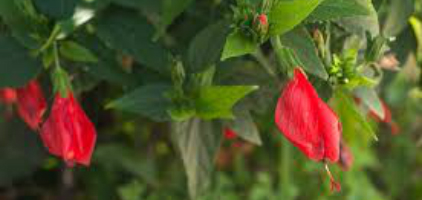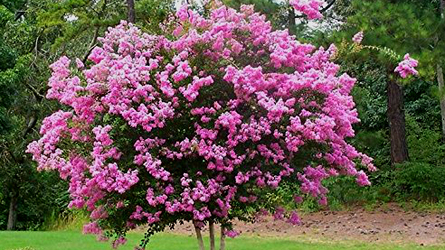 Est. 2008; bringing nature, & gardeners together June 14, 2024
|
|
NURSERY NOTES: On June 18 at 7 p.m. funeral director Sarah Wambold offers a talk about "concepts behind conservation burial, a fungi-friendly end-of-life choice," with a focus on her Campo de Estrellas project. Estrellas 🌿 If you have a gardener-type dad, the "30% off all plants" sale at the Natural Gardener from today through the weekend will be of interest. TNG 🌿
Join Austin Davenport on Sat. June 22 at Windsor Park Library to learn about the craft of gourmet mushroom cultivation. 1:30 p.m. Free with registration CTM 🌿

THE MAFIA & THE LEMON TREES: in the early 1800s, England's Royal Navy started to buy up the lemon harvests in Sicily to cure scurvy among its sailors. As an unexpected result, extortion and 'protection' by strongmen became the norm on the island. . . an early incarnation of the Mafia. Aeon ❦

ARE TURK'S CAPS EDIBLE? A definite 'yes' from the folks at Foraging Texas. You can eat the flowers and young leaves raw or cooked, and you can turn the flowers into a pink lemonade. Creating tea or preserves from the fruit are also possibilities. Foraging Texas ❦
THE AUSTIN GARDEN relies entirely on support from its readers. Please consider making a donation to support this bi-monthly publication. Whether an annual or monthly donation, all are welcomed. (At the moment only 5% of readers support this publication) Many thanks in advance. PayPal link ❦
_________________________________________________
CENTRAL TEXAS GARDENER: Landscape architect Christy Ten Eyck understands water-resourceful designs. In her new home garden in Austin, she renovated its footprint to catch water, restore wildlife, and find soulful peace in wanders and wonders. CTG ❦
 Basham's Party Pink will liven up any yard
Crape Myrtle: reliable beauty
by Chris Winslow
For a low-maintenance ornamental tree, you cannot beat the good old crape myrtle. This wonderful flowering tree or shrub (depending on the variety) provides three seasons of color without a lot of fuss or maintenance.
They bloom for months on end, and they come in any size you could imagine. Once established they can hold up with our native tree species during even the most prolonged droughts. Vibrant color and water conservation rolled together into one beautiful tree.
Muskogee, for example, grows 25 - 30 feet high, and blooms for up to four months. Its blossoms are light-lavender and have a strong resistance to powdery mildew. Its fall leaf color is red and yellow and in winter its bark is grey and pinkish-brown.
Another outstanding crape is Natchez. This white flowering beauty grows from 25 to 30 feet and has the second longest bloom period of 110 days. Its fall leaf color is red-orange and its winter bark color is cream-cinnamon brown.
Natchez is resistant to diseases, and is considered the benchmark that all other varieties are compared to. For a dwarf tree, one of the best is Victor. This dark red variety grows to 4 to 5 feet and blooms for 85 days.
For mid-size trees, those growing from 8 to 12 feet there is Siren Red, Pink Velour, Catawba (purple), and Acoma (weeping white).
For trees between 15 and 20 feet there is Dynamite (deep red), Red Rocket (red), and Tuscarora ( coral red to dark pink).
And for truly shade size trees, 25 feet and up, along with Muskogee, Natchez – there’s Basham’s Party Pink.
The crape myrtle (Lagerstroemia indica) has been in the South since they were first introduced from Asia in 1747. Since that time, hundreds of colors and heights have been bred.
In the mid 50s, the Japanese crape myrtle (Lagerstroemia faueri) arrived and an extensive breeding program began. Horticulturalists began to mix the color variations of the Asian crape myrtle with the disease resistance of the Japanese varieties.
The Japanese crapes also had trunk color attributes and greater cold tolerance. They could now be planted farther north.
As these amazing plants go through their amazing bloom cycle, we should all give thanks for the bright colors they bring to our landscapes during the upcoming harsh summer months. Happy gardening everyone! ❦
|

IT'S ABOUT THYME LEGACY PUBLICATIONS.
CONTACT EDITOR DARREL MAYERS |
|
|